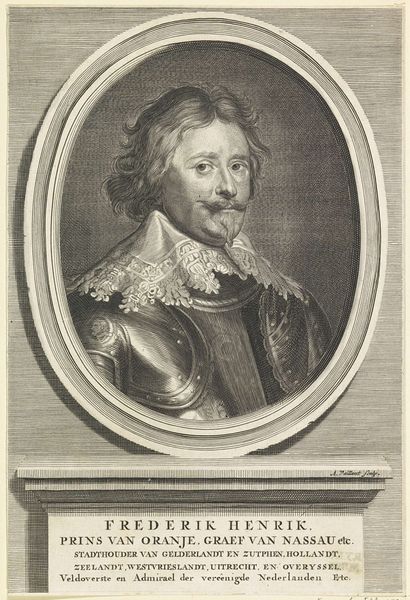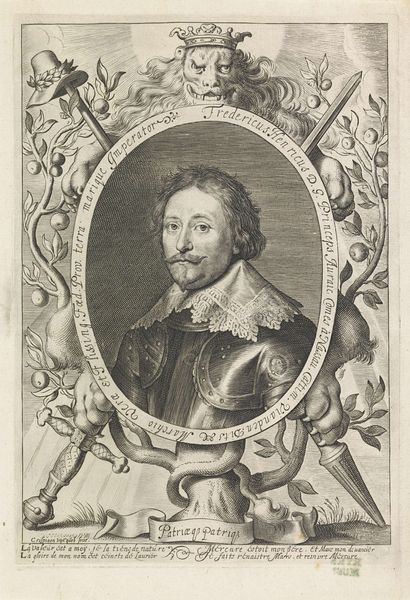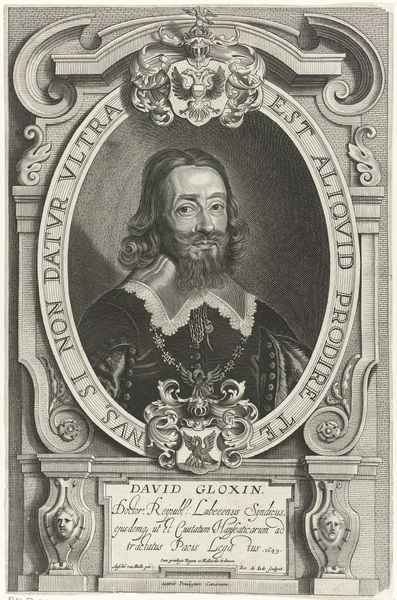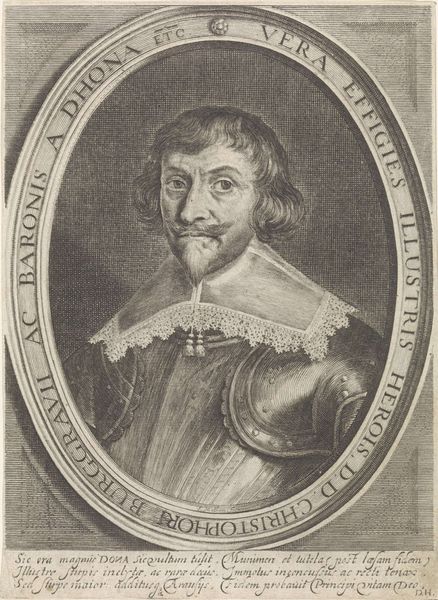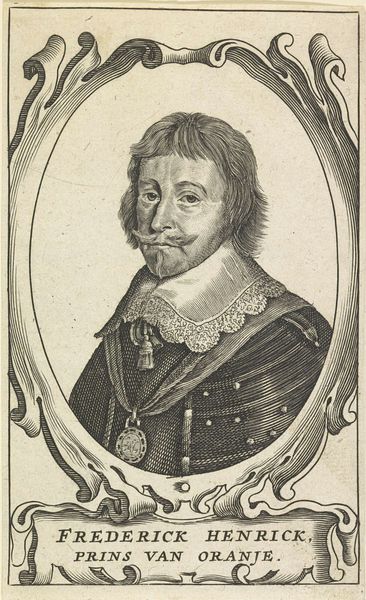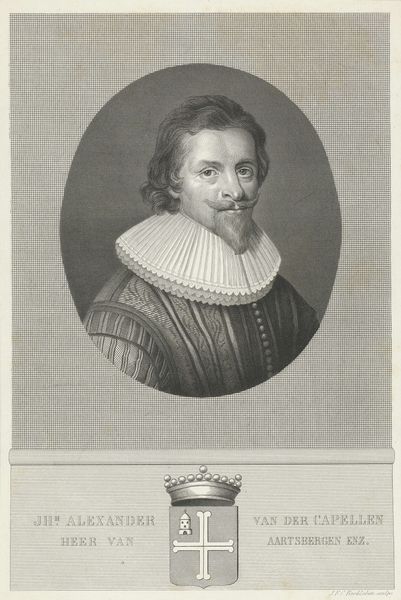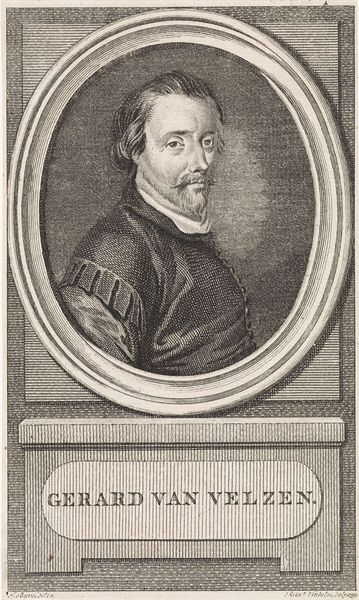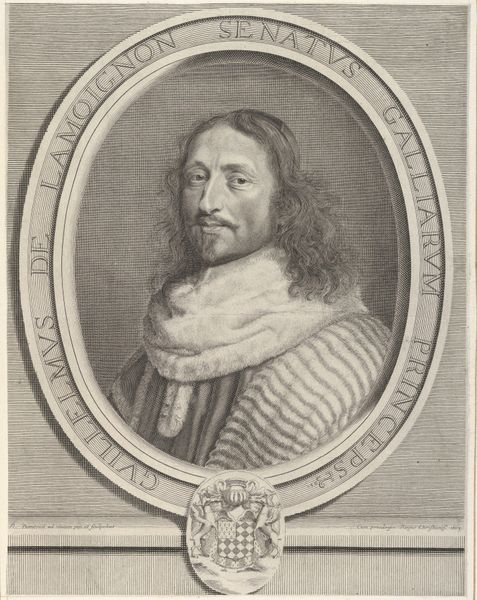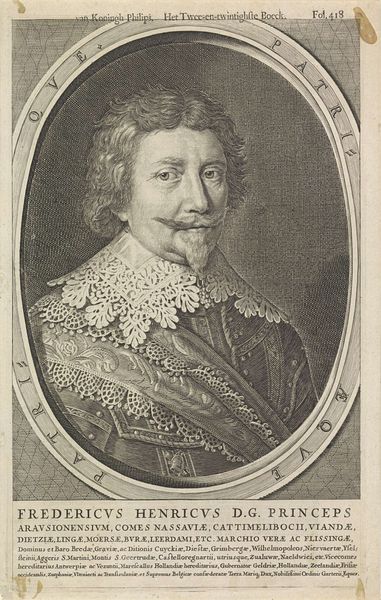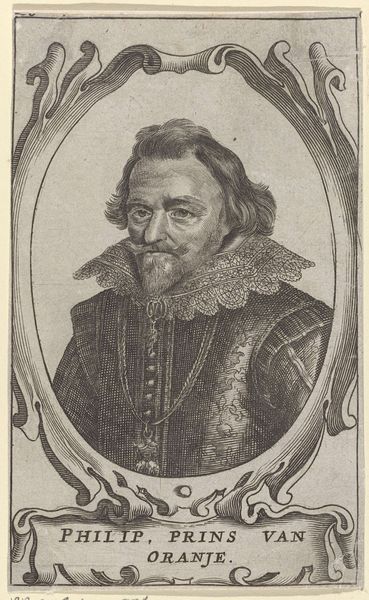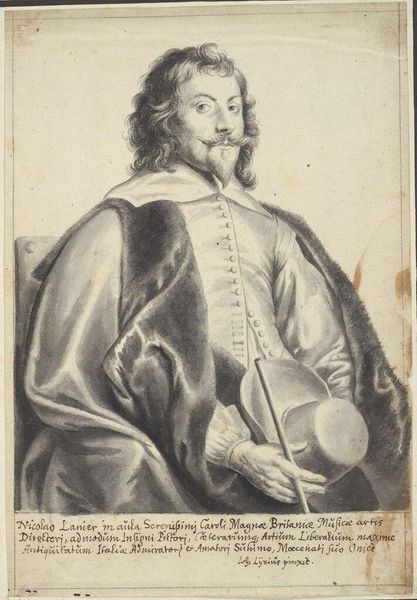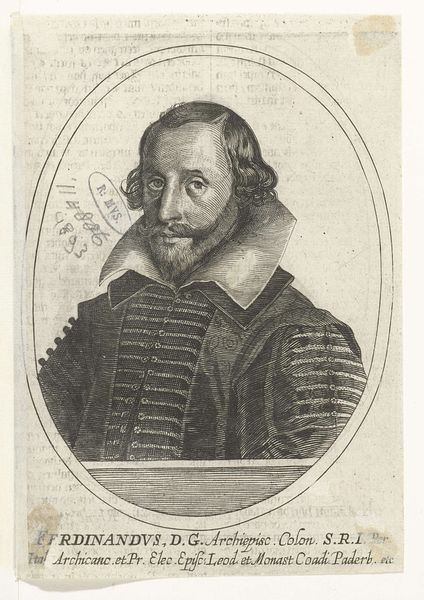
print, engraving
#
portrait
#
baroque
# print
#
old engraving style
#
pencil drawing
#
portrait drawing
#
history-painting
#
engraving
Dimensions: height 292 mm, width 185 mm
Copyright: Rijks Museum: Open Domain
Curator: Here we have a print by Theodor Matham, "Portret van Winand ab Heimbach," dating sometime between 1640 and 1676, currently held in the Rijksmuseum collection. Editor: It strikes me as a stern, almost severe image. The oval frame and surrounding embellishments, while ornate, don't soften the sitter's intense gaze. I wonder what stories are held within that face. Curator: It's an engraving, a medium that involves meticulously cutting lines into a metal plate. Considering that timeframe, imagine the workshop, the tools, the labor involved in reproducing such an image—potentially for wide distribution. Who would have commissioned such a portrait and for what purpose? Editor: Well, the family crests at the top corners definitely hint at status and lineage. The gentleman's elaborate collar and decorative tassels also communicate wealth and authority. It almost has the effect of a mask or symbolic outfit rather than intimate access. What kind of statement does this type of representation makes? Curator: True, such portraits often reinforced social hierarchies. Prints made art accessible to a wider audience than painted portraits, creating new avenues for projecting status through the mechanisms of production and reproduction itself. Were copies intended for a middle class hungry to emulate aristocracy? Editor: Perhaps. Also notice the book behind the crest; a simple emblem for knowledge and piety, connecting Winand to both intellectual pursuits and religious virtue. That iconography positions him very deliberately. Curator: The choice of engraving also contributes to its endurance, wouldn’t you say? This wasn’t meant to be ephemeral. The work embedded within is an announcement to society as much as any one person. Editor: Absolutely. Every line in that engraving, every symbol carefully chosen, constructs a lasting narrative – or at least attempts to. We’re still discussing it centuries later, after all. Curator: Considering this portrait in terms of its creation and context gives us an insightful perspective on art and society in the Baroque era. Editor: Indeed. Paying attention to symbolic visual markers encourages one to ponder the layers of history embedded in even a single portrait.
Comments
No comments
Be the first to comment and join the conversation on the ultimate creative platform.
